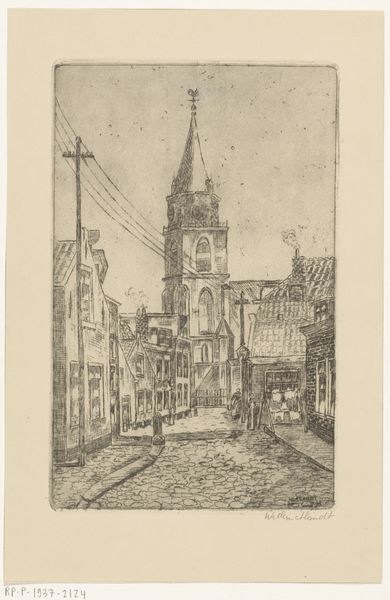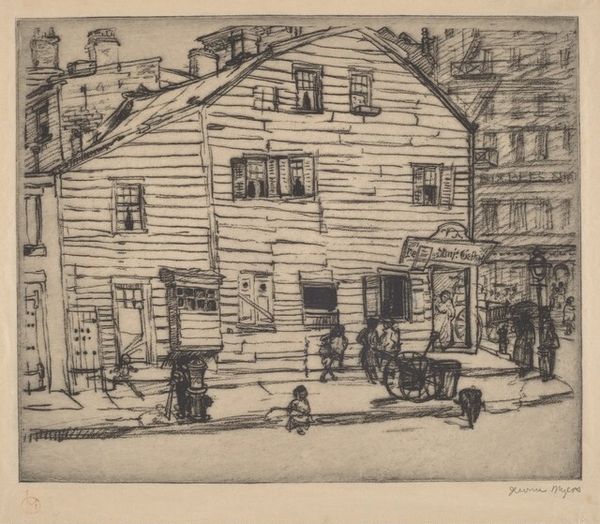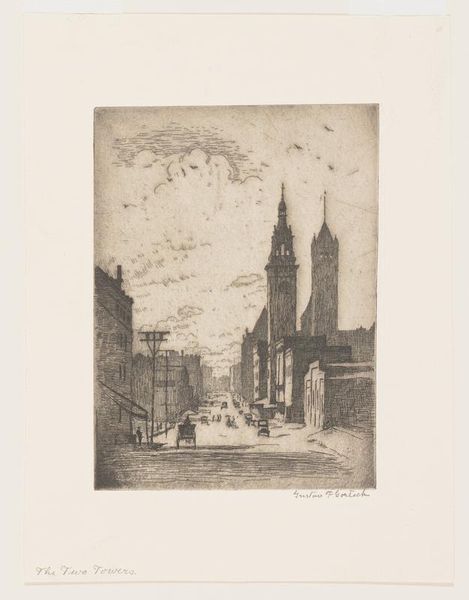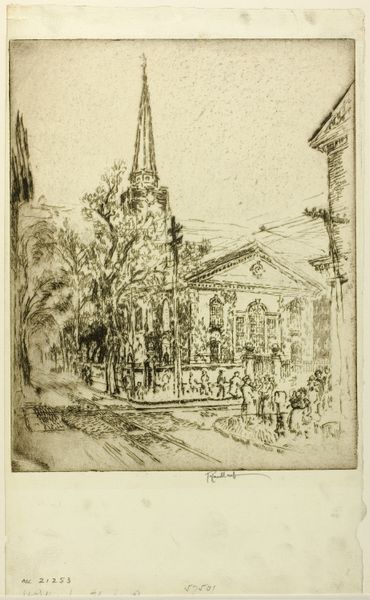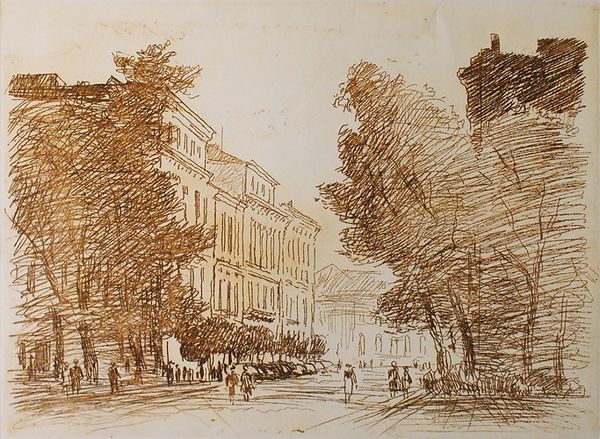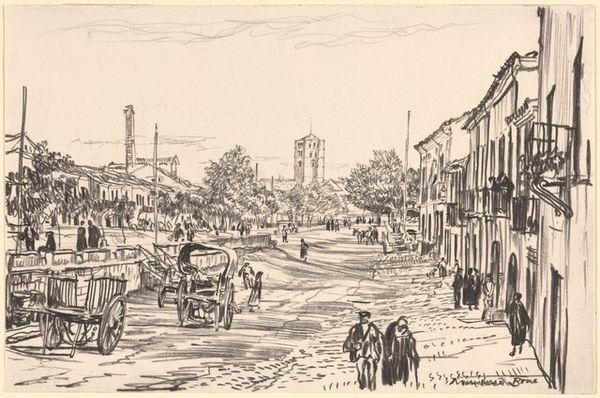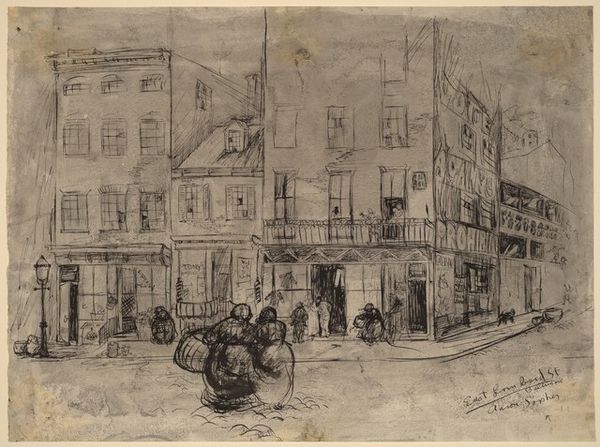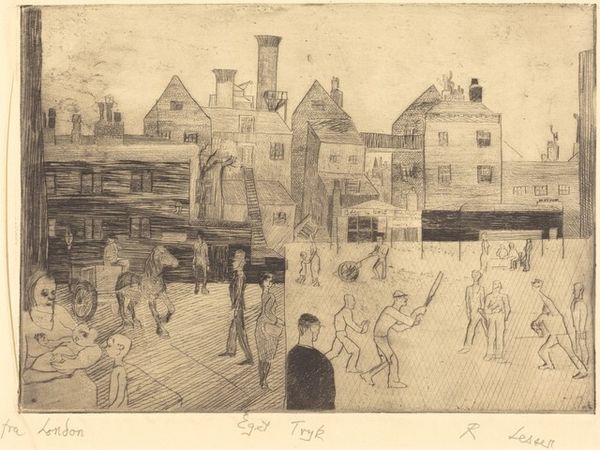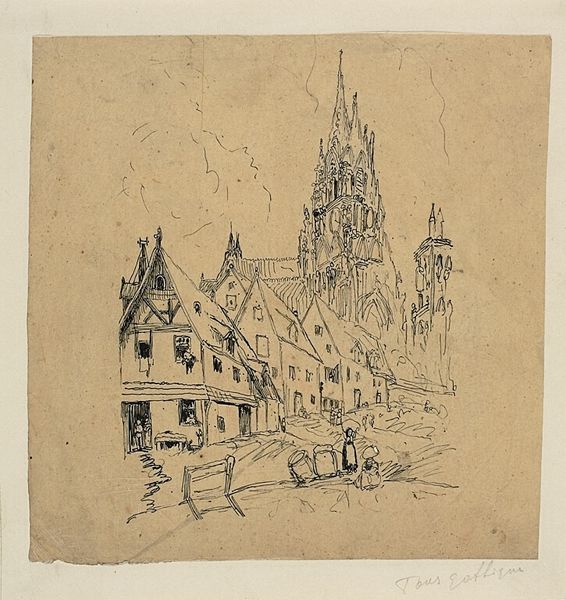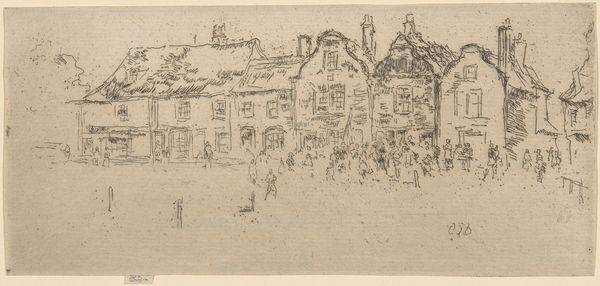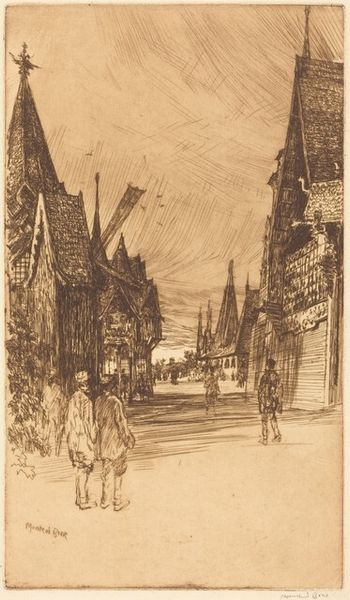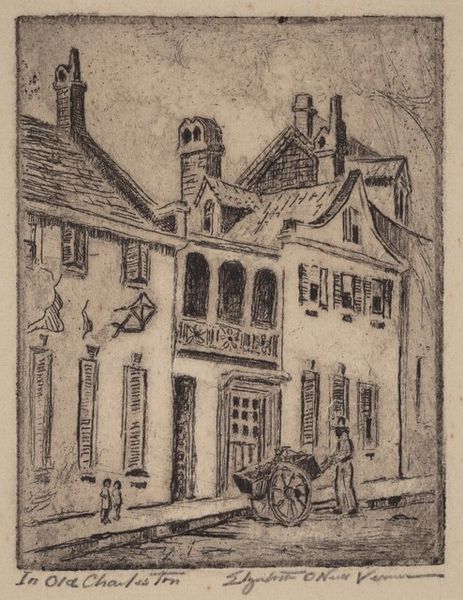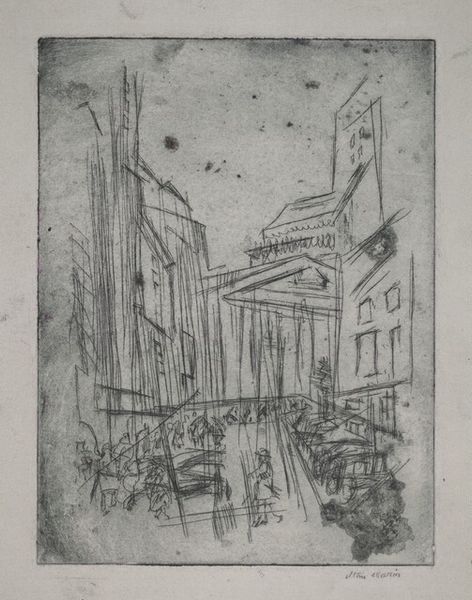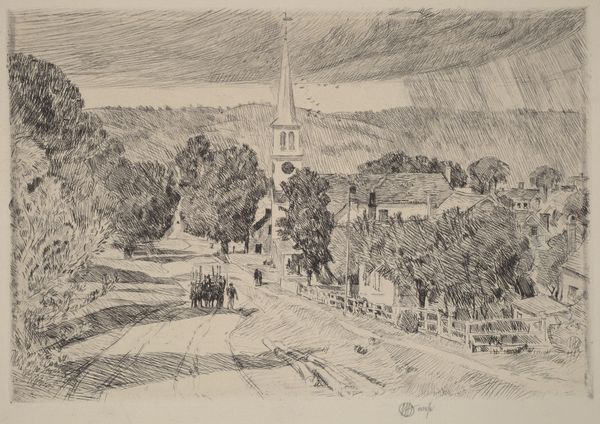
graphic-art, print, etching
#
graphic-art
# print
#
etching
#
cityscape
#
realism
Copyright: National Gallery of Art: CC0 1.0
Curator: The subdued, muted tones initially strike me, like looking through a soft filter, despite the bustling scene depicted. What are your initial thoughts? Editor: "Hieks Street," dating from 1946 and created by Mortimer Borne. This print, achieved through etching, presents a vivid cityscape. Curator: I immediately pick up on the composition, divided, yet seamlessly connected by that street disappearing into the horizon. The church spires, vertically rising like exclamation marks. Churches always act like symbols of morality or power... Editor: Borne's structural approach uses that vanishing point to create a believable three-dimensionality within the flat picture plane. It adheres to classical one-point perspective, an interesting formal decision. Curator: Indeed. Note how the ordinary activities—a cyclist, people gathered—all gain weight by being placed within that pre-established order of church, street and buildings. An assertion of urban, American life post-war... almost heroic. The car in particular... the future is now! Editor: But consider the materiality, the way Borne uses etching. Those subtle tonal gradations evoke a sense of light and shadow. Observe that horse-drawn cart... how the artist juxtaposes both that primitive mode and automobile, each carrying people... How those elements establish a visual rhythm, a story of progress told entirely through form. Curator: You're right! These opposing modes of transport juxtaposed and unified…Perhaps those ordinary, everyday elements serve not merely to depict Hieks Street, but to stand in for something universal: people living, working, striving under similar, symbolic architectural icons. Even the title grounds us. Editor: Yes! He utilizes those realistic components and then pushes into areas that resonate deeper. What a perfect articulation of realist principles coupled with underlying, perhaps idealized emotion. The subdued palette, then, further enhances the melancholic reality... or what was it, what could it be...? Curator: A glimpse into a vanished era made eternal through the artist's carefully chosen, ordered forms and universal cultural symbols. A frozen moment, imbued with all the complex emotions of post-war American optimism blended with uncertainty. Thank you, that was enriching. Editor: I'd concur entirely, delving into the piece from these vantage points grants greater consideration than perhaps one might gather standing alone within the space. Shall we continue our exploration in this manner?
Comments
No comments
Be the first to comment and join the conversation on the ultimate creative platform.
